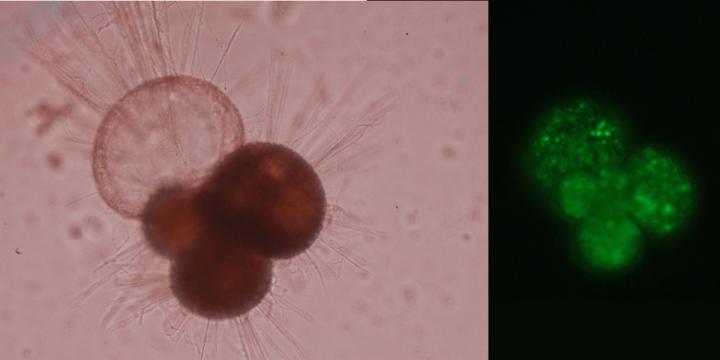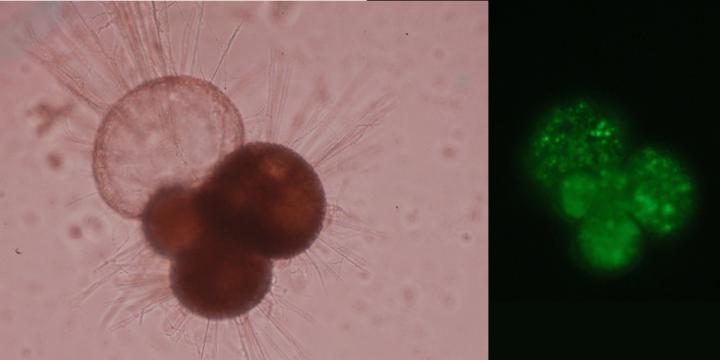
Credit: Dr. Lennart de Nooijer (NIOZ)
Fact: More carbon dioxide (CO2) in the air also acidifies the oceans. It seemed to be the logical conclusion that shellfish and corals will suffer, because chalk formation becomes more difficult in more acidic seawater. But now a group of Dutch and Japanese scientists discovered to their own surprise that some tiny unicellular shellfish make better shells in an acidic environment. This is a completely new insight.
Researchers from the NIOZ (Royal Dutch Institute for Sea Research) and JAMSTEC (Japanese Agency for Marine-Earth Science and Technology) found in their experiments that so-called foraminifera might even make their shells better in more acidic water. These single-celled foraminifera shellfish occur in huge numbers in the oceans. The results of the study are published in the leading scientific journal Nature Communications.
Since 1750 the acidity of the ocean has increased by 30%. According to the prevailing theory and related experiments with calcareous algae and shellfish, limestone (calcium carbonate) dissolves more easily in acidic water. The formation of lime by shellfish and corals is more difficult because less carbonate is available under acidic conditions. The carbonate-ion relates directly to dissolved carbon dioxide via two chemical equilibrium reactions.
Self-regulating biochemical magic trick
The classical theory is based on purely chemical processes by which the rate at which lime is created is determined entirely by the acidity of the water. NIOZ researcher and shared first author Lennart de Nooijer: "In our experiments the foraminifera were regulating the acidity at the micro level. In the places where shell formation occurs, the acidity was substantially lower than in the surrounding seawater. Foraminifera expel large amounts of hydrogen ions through their cell wall. This leads to acidification of their immediate micro-environment causing the equilibrium between carbon dioxide and carbonate to change in favour of carbon dioxide. The organism take up the increased concentration of carbon dioxide quickly through its cell wall. On the inner side of the cell wall, a low acidity prevails due to the massive excretion of protons. Under these conditions the ingested carbon dioxide is again converted to carbonate, which reacts with calcium to form lime. Such an active biochemical regulation mechanism has never been found before."
Can self-regulating single-celled organisms lead to a more rapid global warming?
The surface layer of the ocean is in equilibrium with the atmosphere. Therefore, more carbon dioxide in the air also leads to more dissolved carbon dioxide in the ocean's surface . "This finding may have important implications for the relationship between carbon dioxide levels in the air and the formation of calcareous structures by organisms," says co-author Professor Gert-Jan Reichart. "If the classic hypothesis holds and more carbon dioxide leads to less lime production, the oceans can continue to take up CO2 from the atmosphere. But what if the majority of the organisms can regulate the chemical form of their inorganic carbon by biochemical processes like our foraminifers did, and continue to form lime structures in a more acidic ocean? Over time, the concentration of dissolved carbon dioxide in the oceans may start to increase. Consequently, the ability of the oceans to take up a large part of the carbon dioxide in the air may start to decrease. This would mean that more carbon dioxide would remain in the air, leading to a more rapid warming of our planet."
###
Media Contact
Dr. Lennart de Nooijer
[email protected]
31-652-552-119
@NIOZnieuws
http://www.nioz.nl
############
Story Source: Materials provided by Scienmag





